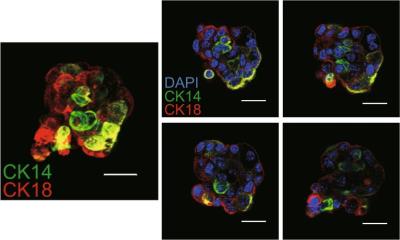New horizons in Nuclear Medicine therapy
Jean-Francois Chatal
Radionuclide therapy has been rapidly developing for the last 20 years, due to the availability of new carrier molecules and radionuclides. For some years the clinical efficacy has been modest with a low percentage of objective responses and no survival benefit because, most often, the patients had large tumor burden.
The efficacy improved markedly in the clinical setting of microscopic residual disease. Such situation was illustrated by the use of radioimmunotherapy (RIT) in Non Hodgkin Lymphoma with a moderate efficacy in patients who had been heavily pretreated and had, most often, a large tumor burden and a very good efficacy in patients treated as consolidation after upfront immuno-chemotherapy. Radiopeptide therapy using labeled somatostatin analogs proved also to be the most efficient treatment of patients with metastatic endocrine tumors for whom a documented survival benefit of several years was observed. Several original approaches should still markedly improve this favorable situation and open new horizons to radionuclide therapy. For treatment of Non Hodgkin Lymphoma one such approach will be dual-targeted RIT combining an unconjugated anti-CD20 antibody (as currently used) with a radioimmunoconjugate binding to a noncompeting antigen such as CD22. Another topic of consideration is the use of fractionated, instead of single dose, RIT allowing to substantially increase the objective response rate while minimizing toxicity. High-dose RIT using iodine-131 followed by autologous hematopoietic stem-cell transplantation also proved to be quite efficient by comparison to conventional high-dose chemotherapy. Another option will be to use the pair of Cu-64/Cu-67 radionuclides for combined dosimetry PET imaging and therapy. Pretargeted RIT which involves the separation of the localization of tumor with an anticancer antibody from the subsequent delivery of the therapeutic radionuclide will increase the delivery of tumoricidal doses while sparing normal tissues of unmanageable toxicity. In addition to radiolabeled somatostatin analogs there is no doubt that other peptide agonists or antagonists will successfully extend the field of radiopeptide therapy. Everybody agrees that radionuclide therapy will be more and more combined to other treatment modalities including chemotherapy for an optimal effectiveness. Finally the use of alpha particle-emitting radionuclides, such as astatine-211, could have a high killing effect in the clinical setting of microscopic residual disease but the translation of targeted alpha-particle therapy into the clinical domain will be time-consuming.
27.10.2009





